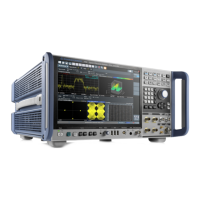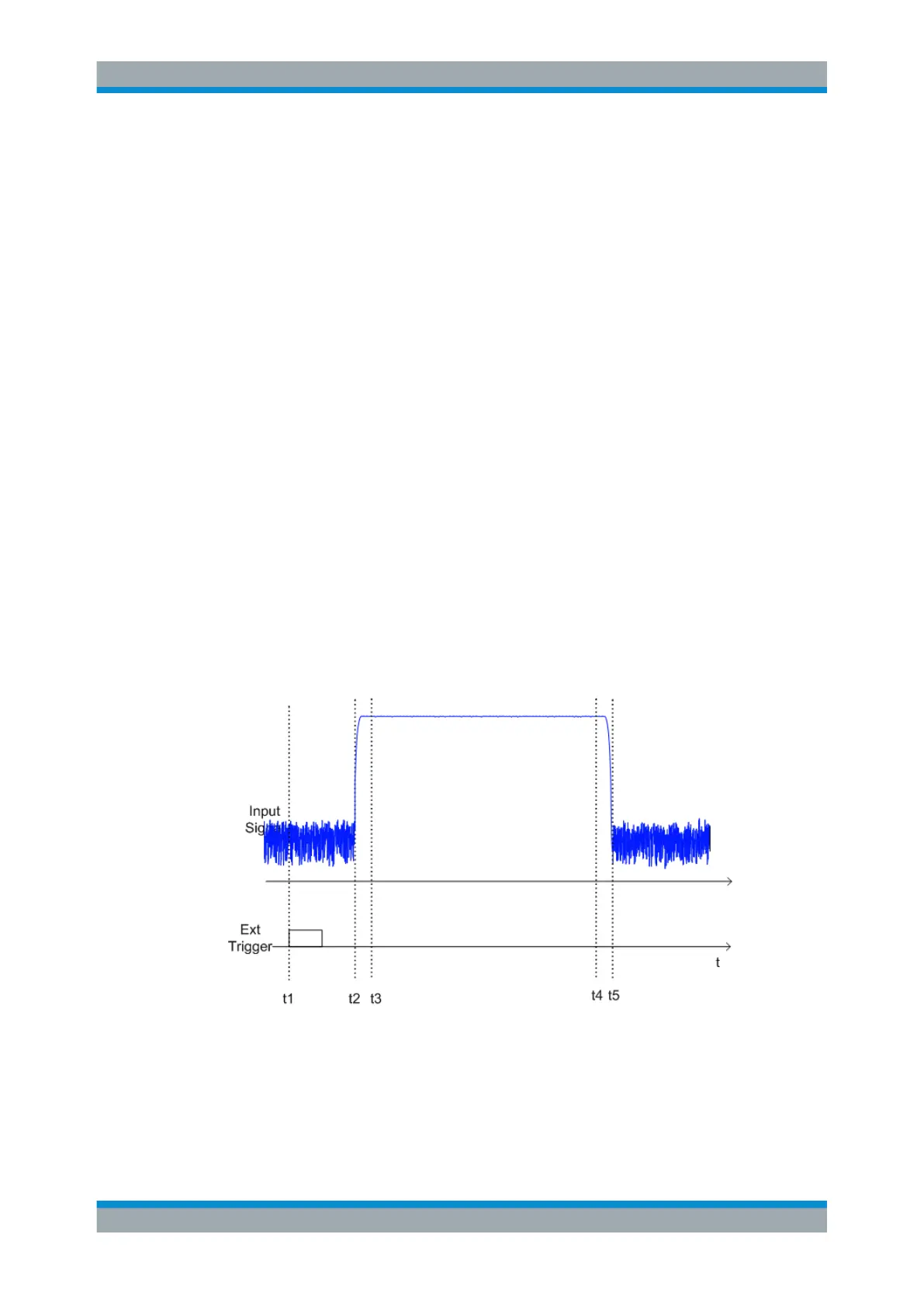Measurements and Results
R&S
®
FSW
304User Manual 1173.9411.02 ─ 43
4. For each active trace, define up to three ranges within the time period to be mea-
sured. In the example covering 3 pulses, you could define one range for each
pulse.
a) Assuming the external trigger determines T=0 as the start of the first pulse,
define the start time of range 1 at 0 s.
b) Define the stop time of range 1 at the duration of the first pulse.
c) Activate range 1 by setting "Range 1 Use" to On.
d) Define the start time of range 2 as (duration of pulse 1 + duration of interval)
e) Define the stop time of range 2 as (start time of range 2 + duration of pulse 2)
f) Activate range 2 by setting "Range 2 Use" to On.
g) Define the third range in the same way.
5. Start a sweep.
As soon as the defined number of samples have been measured, the statistical
evaluation is displayed. Only the signal levels within the pulse periods are consid-
ered.
7.8.7 Examples
7.8.7.1 Configuration Example: Gated Statistics
A statistics evaluation has to be done over the useful part of the signal between t3 and
t4. The period of the GSM signal is 4.61536 ms.
t1: External positive trigger slope
t2: Begin of burst (after 25 µs)
t3: Begin of useful part, to be used for statistics (after 40 µs)
t4: End of useful part, to be used for statistics (after 578 µs)
Statistical Measurements (APD, CCDF)

